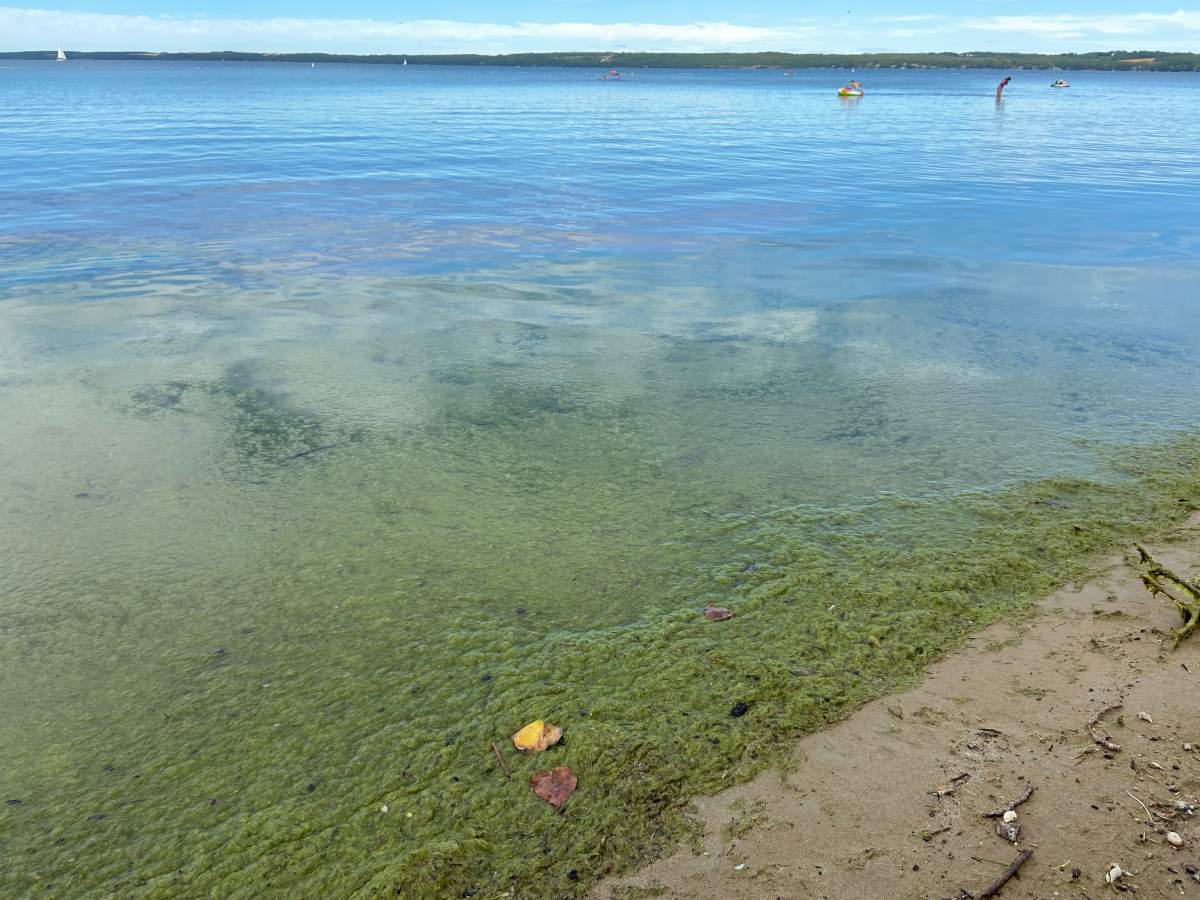The health unit serving the Peterborough area is advising residents to protect themselves and their pets from blue-green algae blooms on area lakes.

Peterborough Public Health says although there have been no confirmed reports of blue-green algae on lakes so far this summer, officials advise reporting a bloom if found. The health unit serves Peterborough, Peterborough County, Curve Lake First Nation and Hiawatha First Nation.
Blue-green algae (cyanobacteria) are a type of bacteria known for quickly reproducing and collecting to form large, highly visible blooms — both on the surface of water as a scum, or on a lake bottom as a mat.
The blooms are smelly and some species can also release poisons called cyanobacterial toxins, when the cells that make up the bloom rupture or die, the health unit advises.

Get weekly health news
The health unit says the toxins, if ingested, can cause headaches, fever, nausea, vomiting, abdominal pain or diarrhea. Long-term consumption of water containing high levels of cyanobacterial toxins may cause neurological or liver problems.
Some people may develop a mild skin rash or eye irritation even if there is no toxin produced by a bloom.
For farm animals and pets, consuming large quantities of heavily contaminated water may result in sickness or death.
“It can be tricky even for experts to identify blue-green algae, so it’s important for residents to familiarize themselves with the different categories on our website should they suspect a bloom in their area,” said Wanda Tonus, public health inspector.
“We want to enjoy our lakes during the warm months, and being aware of blue-green algae is another way to protect ourselves and our pets.”
To report a blue-green algae bloom, residents can contact the Ministry of the Environment, Conservation and Parks at 1-866-MOETIPS (663-8477). The ministry — with the assistance of the health unit — will investigate reports of blue-green algae.
The health unit has more information on blue-green algae and precautions to take before consuming water or swimming where there has been a bloom on its website.












Comments